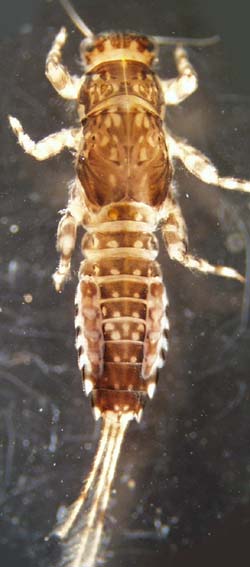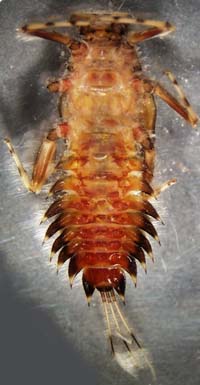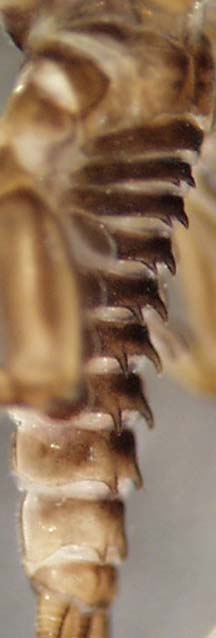
THE XERCES SOCIETY FOR INVERTEBRATE CONSERVATION Aquatic Invertebrates in Pacific Northwest Freshwater Wetlands |
| Identify taxa |
Ephemerellidae (spiny crawlers) |
|||
|
The spiny crawler mayflies are diverse and ecologically important in erosional habitats of wadeable streams in the Pacific Northwest. Most are collector-gatherers, feeding off organic material they scrounge from on or around the substrate. A few are scrapers, rasping diatoms from substrate surfaces, and a couple are even known to be predators (a rare diet for mayflies). This diverse and beefy looking group of mayflies have evolved amazing adaptations for life in current. They have strong arms, spines, suction, and are extremely flat. These characters, along with color, tail length and gills, are all very helpful in identifying one species from another. The family as a whole can be distinguished by their three cerci (the middle of which is at least as long as the others), their robust shape, and that they never have gills on the second abdominal segment. |
|
Size: small to large Identifying feature(s): always with 3 tails; never have gills on the second abdominal segment; usually robust, sometimes flattened, and often with tubercles or spines Habitat: streams - riffles |
 |
|
© 2007 Xerces Society
Contact info@xerces.org



